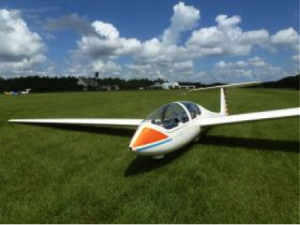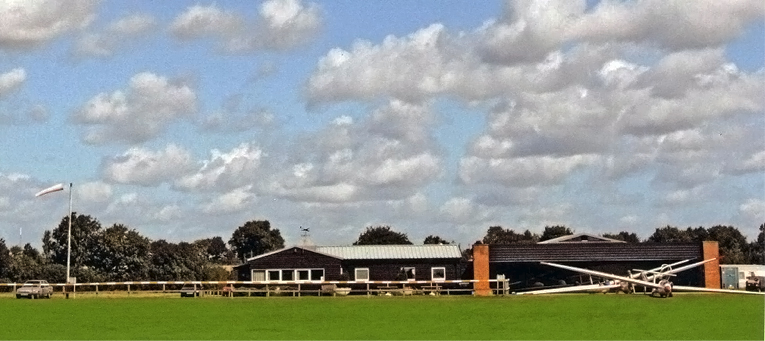Flying in Florida by Vernon Bettle
The Florida sun was warm on my back as we parked the Mustang convertible and strolled into Disney. My 8-year-old son tugged at my elbow, almost incoherent with excitement. “Dad, Dad, Splash Mountain!” He and the rest of the family had been here last year while I visited my brother in Canada and I knew their game: find a ride with big drops, rapid acceleration and plenty of water to frighten father.
A decade on, that little boy is now taller than me, but the game remained the same. However, I had the advantage of being accustomed to aerial manoeuvres from learning to fly since the previous visit, which might let me hold my own against the offspring. Old age and treachery overcomes youth and skill, they say. My son was soon about to start university, my daughter just about to go up for her second year and I had had some hopes of leaving them at home while my wife and I went for a romantic walking holiday in the country. Perhaps along the Cotswold edge near Nympsfield, on the North Yorkshire moors around Sutton Bank, or in the Black Mountains. You get the picture. No chance: the family want to go back to Florida and you will enjoy it.

Vernon Bettle flys a Ventus out of (and most times back to) Wormingford
I turned the little red Chevy off Interstate 4, along the 27 then onto the imaginatively named Country Road 474. Not a Chevy to take to the levee this, unless you wanted to push it down the bank into the river, this was a Korean built, retro van-styled thing suitable for Postman Pat’s American cousin. It droned feebly through countryside flat even by East Anglian standards with areas of swampy, scrubby woodland and small fields with scraggy, bored looking cattle. I passed some mineral workings as I followed the directions for the airfield, passed Alligator Road and turned down South Fork Ranch Road through some trees. It looked an unlikely spot for any sort of airfield but I drove down the track onto an expanse of that very green, oddly (to northern eyes) wide leafed grass which was Seminole-Lake gliderport.I drove past a few battered glider trailers and parked near the colonial styled bungalow which seemed to be the centre of operations. Inside, a man who had been cutting the grass on a tractor confirmed that I was expected and that my instructor was in the air with a pupil. I sat down on the low chairs and the other occupant, a smartly turned out elderly lady said hello. In that charmingly polite yet open American way, she explained she was waiting for her husband who was in the air. He had held every type of licence he could as a younger man in the military, but had never flown gliders and his children had arranged him a trial lesson for his 80th birthday. He had taken to it, and they were driving from Port Canaveral on the Atlantic coast several days each week. She told me how his father had been a motor mechanic pre WWII, and had enlisted hoping to fly; but on asking his civilian occupation, the recruiting sergeant had instead told him he now was an aircraft mechanic. His son, her husband, had bought a piper cub post war and his father had looked at it and immediately announced it needed an engine rebuild, which he undertook. Her first date involved landing in a field near a garage to refuel. At the time, she had taken this as normal aviation practice.
 The intrepid aviator duly returned and I was driven over to the glider by the CFI, Steve, a fit looking man with cropped, ex-military hair in his 60s. I wasn’t sure what sort of glider to expect. I was in fact presented with a Grob 3, the same as we have at Wormingford, but with a very faded chalky finish from the Florida sun, and no electrics at all. We had no chutes due to weight considerations: although I noticed that all the weight and speed limits on the placard had been greatly lowered.
The intrepid aviator duly returned and I was driven over to the glider by the CFI, Steve, a fit looking man with cropped, ex-military hair in his 60s. I wasn’t sure what sort of glider to expect. I was in fact presented with a Grob 3, the same as we have at Wormingford, but with a very faded chalky finish from the Florida sun, and no electrics at all. We had no chutes due to weight considerations: although I noticed that all the weight and speed limits on the placard had been greatly lowered.
Without a wing runner or radio, I gave hand signals to the tug pilot, started with the starboard tip on the ground and full left aileron as instructed, and off we went. To my surprise, we didn’t cartwheel, the wing lifted easily and we climbed bumpily away over the trees. Below us as we climbed out, the options for a cable break looked as limited as I’d guessed. The day had started blue, and now at 11am conditions looked quite good although with a fairly low cloud base and a forecast of thundery showers in the afternoon.
I pulled off at 2500ft and after a bit of fumbling, found lift and climbed away. Thermals were strong, but the sink was too and cloud base rose to 3500ft max. Steve told me that conditions were often best in the winter with clearer, drier air and bases to 6000ft. We didn’t always agree where the lift should be: the clouds seemed to be favouring the English opinion that day.


No comments yet.